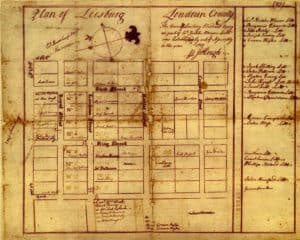October 5 history blog post: One of a series of short essays to provide the cultural, political and geographical context for the 1766 travelers.
Salome Meurer’s journal for October 11, 1766: “At 8 o’clock in the morning we reached the Potomac. The Negro that got us across the river didn’t know what he was doing. He fell in the water four times and left us stranded three times. In the afternoon we traveled through Leesburg (Virginia). The people all came out of their houses and said, “Where did you leave all of your men?” Some said they thought we were a bunch of Zinzendorfers. We would rather not have stayed too long in this country. All week long, but especially today, our thoughts and feelings were in Bethlehem.”

European settlement of Leesburg began in the 1730s when Tidewater planters moved westward and established large farms and plantations. The area was home to some of the First Families of Virginia, including the Carters, Masons and Lees. in 1755 Nicholas Minor established a tavern near the crossroads of a north-south route, sometimes referred to as Carolina Road (now U.S. Highway 15) and the Potomac Ridge Road (now Virginia Highway 7). By 1757 there were a few buildings around the tavern, and Minor dubbed the area George Town, in honor of King George. In 1758 the British Colonial Council ordered that the county court house be established at the crossroads. By 1758 the Virginia General Assembly renamed the town Leesburg, to honor Thomas Lee, the father of Francis Lightfoot Lee and great-great uncle of Robert E. Lee. At the start of the American Revolution, Leesburg had fewer than 500 residents.
Virginia S. Hart A’75
Resources:
“History of Leesburg”
“Early History of Leesburg”
